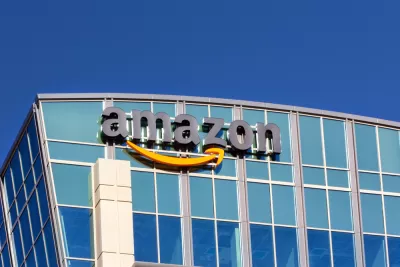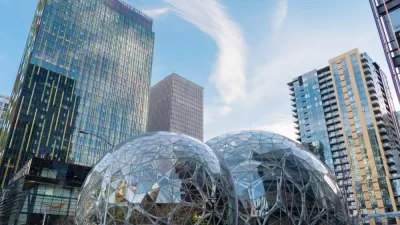In September, 238 applicants dreamed the impossible dream of attracting the second headquarters of Amazon, along with some 40,000 jobs. Today, all but 20 of those applicants will have to find a new quest.

"Amazon said on Thursday that it had whittled the list of possible homes for its second headquarters to 20, including centers of technology like Boston and some surprise locations like Columbus, Ohio," reports Nick Wingfield.
The list reads as follows:
- Atlanta
- Austin, Tex.
- Boston
- Chicago
- Columbus, Ohi
- Dallas
- Denver
- Indianapolis
- Los Angeles
- Miami
- Montgomery County, Md.
- Nashville
- Newark
- New York
- Northern Virginia
- Philadelphia
- Pittsburgh
- Raleigh, N.C.
- Toronto
- Washington, D.C.
As noted by Wingfield, the finalists tend toward the Midwest, South, and the East Coast—pretty much everywhere but the West Coast and the Silicon Valley. Los Angeles was the only West Coast city to make the final 20. The Washington, D.C. region pulled three finalists alone.
Planetizen provided a comprehensive roundup of media coverage of #HQ2 deadline day, which sparked a wave of interest unparalleled in recent years and raised continuing questions about Amazon's method for selecting a new home. Martin Austermuhle just this week managed to find out some of the details of Washington, D.C.'s bid for Amazon's second headquarters through a Freedom of Information Act request. Still, reports Austmeruhle, many of the incentives D.C. has offered for HQ2, including the actual dollar value to Amazon, "remain a mystery, known only to senior city officials and executives with the Seattle-based company."
FULL STORY: Amazon Chooses 20 Finalists for Second Headquarters

Trump Administration Could Effectively End Housing Voucher Program
Federal officials are eyeing major cuts to the Section 8 program that helps millions of low-income households pay rent.

Planetizen Federal Action Tracker
A weekly monitor of how Trump’s orders and actions are impacting planners and planning in America.

Ken Jennings Launches Transit Web Series
The Jeopardy champ wants you to ride public transit.

California Invests Additional $5M in Electric School Buses
The state wants to electrify all of its school bus fleets by 2035.

Austin Launches $2M Homelessness Prevention Fund
A new grant program from the city’s Homeless Strategy Office will fund rental assistance and supportive services.

Alabama School Forestry Initiative Brings Trees to Schoolyards
Trees can improve physical and mental health for students and commnity members.
Urban Design for Planners 1: Software Tools
This six-course series explores essential urban design concepts using open source software and equips planners with the tools they need to participate fully in the urban design process.
Planning for Universal Design
Learn the tools for implementing Universal Design in planning regulations.
Ada County Highway District
Clanton & Associates, Inc.
Jessamine County Fiscal Court
Institute for Housing and Urban Development Studies (IHS)
City of Grandview
Harvard GSD Executive Education
Toledo-Lucas County Plan Commissions
Salt Lake City
NYU Wagner Graduate School of Public Service




























